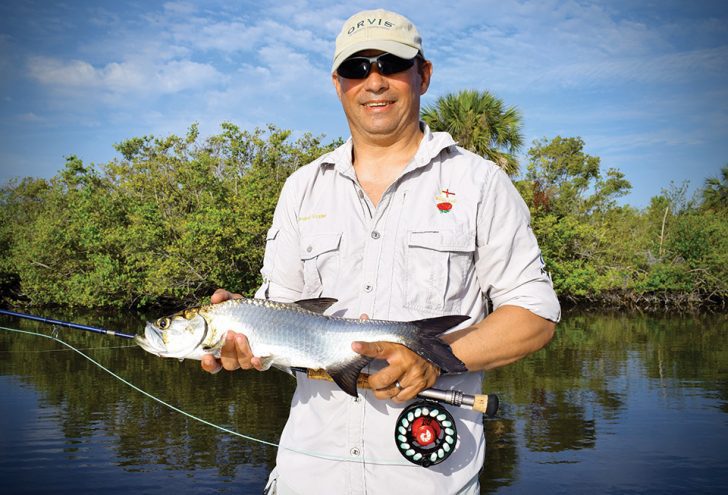Hello there angler! Welcome to the February edition of Pro Tip with Capt. Jonathan Moss. Last month we began a two part series on catching Juvenile Tarpon with a fly rod. Fly fishing is great fun! For those who have never fly fished, let me encourage you to challenge yourself this new year. In the first part of this series, we discussed rod, reel and line selection and how to best set up a fly rod for Juvi Poon. Additionally we went over my favorite assortment of flies for the Space Coast. In this second and last part of the series, we will focus on hooking and landing Juvenile Tarpon.
Casting to and hooking Tarpon with a fly rod:
In the summer months, our water temperatures rise causing there to be less oxygen in the water. Because of this, Tarpon will “roll” where their backs, dorsal fin and tail come out of the water to take in fresh air. This rolling action is what I look for on the flats when in pursuit of Tarpon. Once you have found the school of tarpon, cast out in front of the Tarpon and begin stripping your fly. Just like casting to tailing fish, you will need to lead the fish. What I mean by “lead the fish” is cast beyond the fish and in front of the fish so that your fly will intersect with the Tarpon. This can be a bit tricky as the fish are always moving. In order to trigger a bite, you must put your fly in front of the Tarpon. They need to see the fly move, and it must be right in front of their face. This is why I call Tarpon “my personal favorite frustration.” because some time a perfect presentation is completely refused, so be patient.
Once a Tarpon eats, they will turn their heads, the line comes tight and then you must strip set to set the hook. A strip set is the act of setting the hook by forcefully pulling the fly line straight back and not lifting the rod tip. Lifting the rod tip to set the hook is a technique called “Trout Set” and doing so on our inshore waters will result in missing the fish. Additionally, strip setting prematurely will only result in pulling the fly out of the feeding Tarpon’s mouth so wait just a second for the Tarpon to eat the fly! When the hooked fish feels the tension of a set hook, they will propel themselves out of the water, shaking their head back and forth violently. This is when you will want to implement a Tarpon fishing technique called “ Bow to the King” which simply means, pointing your rod tip at the jumping fish. When you bow, you are allowing slack to form in the line. This is important because when a Tarpon is airborne, tension in the line will cause the hook to become dislodged, and you will lose your fish.That is known as jumping Tarpon. “Bowing to the king” takes some time to perfect but will greatly increase your hook-to-catch ratio. Also line management is very important to pay attention to as your fly fishing. If the tarpon surges and takes line, and your line is tangled or caught on something, it could result in a broken line. –Tight Lines
By Captain Jonathan Moss
Go Castaway Fishing Charters
www.gocastaway.com
407-760-8593

